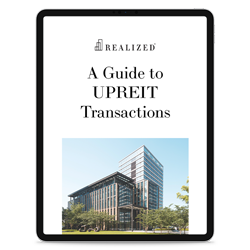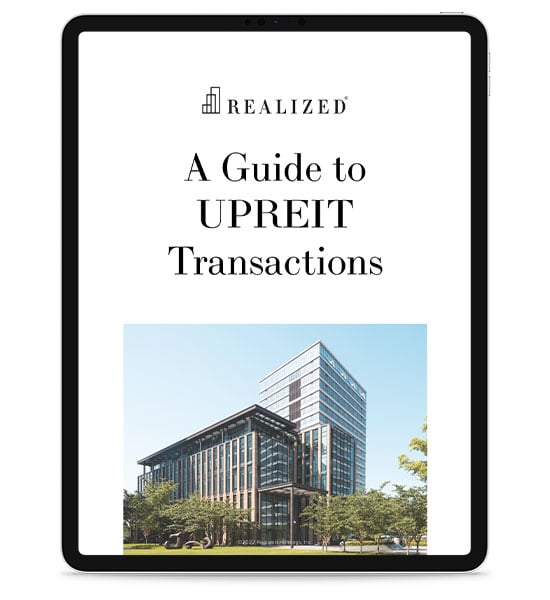
To some investors, one of the most appealing aspects of investing in real estate is the opportunity to earn truly passive income. While some people want to be actively engaged in their investment properties, others covet the potential to have their properties generate a passive form of income. However, it’s important to note that there are multiple types of passive real estate investments. Understanding what those options are and which one is right for you can help ensure that you’re making the appropriate choice with your money. One such example of a passive real estate investment tool is a REIT.
What Is a REIT?
Real estate investment trusts, also referred to as REITs, were created on September 4, 1960, when President Dwight D. Eisenhower signed legislation that introduced commercial real estate investing options to regular Americans. Up to that point, only the super wealthy were capable of investing in commercial real estate. REITs combined the principles of stock market investing and real estate investing to help members of the working class potentially increase their own net worth.
A REIT is a company that operates, owns, or finances properties with the goal of generating income for investors. REITs pool capital from a number of investors and operate much like a mutual fund. This fractional investment structure allows investors to enjoy any profits generated by the property without having to be involved with the purchase, management, or maintenance of a property.
REITs allow investors to purchase shares in commercial real estate portfolios. These properties can include apartment complexes, hotels, data centers, shopping malls, healthcare facilities, cell phone towers, and much more. Essentially, any type of property that seeks to generate income and is part of a commercial real estate portfolio can be found in a REIT.
In order for a company to be considered a REIT, it must meet the following requirements:
- It must invest no less than 75% of its total assets in real estate, cash, or U.S. Treasuries
- At least 75% of gross income must come from rents, mortgage interest, or sales of real estate
- At least 90% of taxable income must be paid to shareholders
- Must be managed by a board of directors or trustees
- Must be a taxable corporation
- Must have at least 100 shareholders after one year of existence
- No more than 50% of shares can be held by five or fewer individuals
Advantages of a REIT
Since most REITs are traded on public exchanges, REITs are incredibly easy to buy and sell. In terms of their performance, REITs strive to provide risk-adjusted returns and a steady flow of cash. In addition, the chance to add commercial real estate to a portfolio provides an additional diversification option. Most investors know that a diverse portfolio helps manage risk, as you are not totally reliant on a single asset class. Finally, and perhaps most importantly, dividends generated by commercial real estate are often higher than the dividends provided by other types of assets.
Disadvantages of a REIT
As is the case with any type of investment opportunity, there are also some disadvantages to REITs. The biggest disadvantage of publicly traded REITs is volatility, as they may behave like regular stocks. It’s also worth noting that some REITs charge high transaction and management fees, in addition to the fact that REIT dividends are generally taxed at a higher rate than regular income.
Investing in a REIT is a way to pursue a passive income while also diversifying your own investment portfolio. Depending on your personal goals and investment strategy, REITs can be a useful tool for your own financial future.
This material is for general information and educational purposes only. Information is based on data gathered from what we believe are reliable sources. It is not guaranteed as to accuracy, does not purport to be complete and is not intended to be used as a primary basis for investment decisions. It should also not be construed as advice meeting the particular investment needs of any investor. Realized does not provide tax or legal advice. This material is not a substitute for seeking the advice of a qualified professional for your individual situation. Diversification does not guarantee a profit or protect against a loss in a declining market. It is a method used to help manage investment risk. A REIT is a security that sells like a stock on the major exchanges and invests in real estate directly, either through properties or mortgages. REITs receive special tax considerations and typically offer investors high yields, as well as a highly liquid method of investing in real estate. There are risks associated with these types of investments and include but are not limited to the following: Typically no secondary market exists for the security listed above. Potential difficulty discerning between routine interest payments and principal repayment. Redemption price of a REIT may be worth more or less than the original price paid. Value of the shares in the trust will fluctuate with the portfolio of underlying real estate. Involves risks such as refinancing in the real estate industry, interest rates, availability of mortgage funds, operating expenses, cost of insurance, lease terminations, potential economic and regulatory changes. This is neither an offer to sell nor a solicitation or an offer to buy the securities described herein. The offering is made only by the Prospectus. The actual amount and timing of distributions paid by programs is not guaranteed and may vary. There is no guarantee that investors will receive distributions or a return of their capital. These programs can give no assurance that it will be able to pay or maintain distributions, or that distributions will increase over time.



